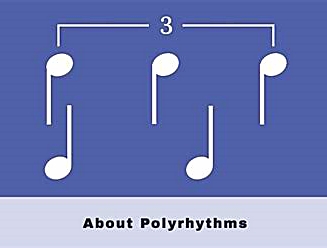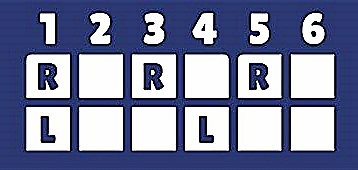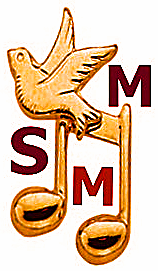Drum Polyrhythms – Spirit Music Meet-Ups

Drum Polyrhythms – YouTube Playlist
Video – Intro to Spirit Music Meetups
SUBSCRIBE to our YouTube Channel to get the latest videos!
Follow us on GETTR, the fastest-growing free-speech Social Network in the world!
All of our Media info, photos, and videos
Please comment on the bottom of any page following our BLOG Etiquette Guidelines.
Note: On your phone, PDF documents may only open if you choose the “Save, Replace, or Keep Both” option and then it will be downloaded and notify you of this on the top of your screen. Open it there or in your Downloads folder and it will give you the option to Open with Adobe Acrobat, Drive, or some other PDF app you have installed on your phone. If you watch the associated video, it will open in another tab/window so that you can easily bounce back & forth between the PDF doc and the video. If your screen is big enough you can even arrange the windows next to each other!

A Quick Method for Counting any Polyrhythm:
A against/over B (A:B) Polyrhythm:
A = number of Notes in the “top” (“A“) Rhythm. Some consider “A” to be the dominant Cross- or Counter-Rhythm.
B = number of Notes in the “bottom” (“B“) Rhythm. Some consider “B” to be the “background” or “base” Rhythm.
Using the example of a 6:4 Polyrhythm where the “top” (“A“) Rhythm has 6 Notes and the “bottom” (“B“) Rhythm has 4 Notes:
1. Count the “A” Rhythm’s subdivisions as 6 groups of 4 subdivisions for a total of 24 subdivisions, with the 1st subdivision bolded to show where the Played Notes are and the other subdivision shown as Rests or optionally as a Fill-in by another limb:
1 2 3 4 1 2 3 4 1 2 3 4 1 2 3 4 1 2 3 4 1 2 3 4.
2. Count the “B” Rhythm’s subdivisions as 4 groups of 6 subdivisions for a total of 24 subdivisions, with the 1st subdivision bolded to show where the Played Notes are and the other subdivisions shown as Rests or optionally as a Fill-in by another limb:
1 2 3 4 5 6 1 2 3 4 5 6 1 2 3 4 5 6 1 2 3 4 5 6.
3. Now line the subdivisions up one on top of the other, and you can see the relationship of the Played Notes.
1 2 3 4 1 2 3 4 1 2 3 4 1 2 3 4 1 2 3 4 1 2 3 4
1 2 3 4 5 6 1 2 3 4 5 6 1 2 3 4 5 6 1 2 3 4 5 6
4. Create a middle line of commonly Rested or Fill-in subdivisions. The “top” and “bottom” Rhythms show only the Played Notes.
1 1 1 1 1 1 6 Played Notes
2 3 4 2 2 2 3 4 2 3 4 2 2 2 3 4
1 1 1 1 4 Played Notes
5. Re-start the counting where both rhythms have a common Note (i.e., the common “1” from above – the Polyrhythms Cycle’s Resolution):
|1 5 9 |1 5 9 |
| 2 3 4 6 8 10 11 12 | 2 3 4 6 8 10 11 12 |
|1 7 |1 7 |
6. Or use other counting methods that are easier to say quickly:
|1 3 5 |1 3 5 |1 3 2 |
| + 2 + + + + 6 + | 2 6 | 2 3 |
|1 4 |1 4 |1 1 |
7. It may be easier to learn the Feel of the polyrhythm by first reducing the 6:4 by the least common multiple (e.g., 2), resulting in a polyrhythm that’s simpler to Count (e.g, 3:2 Hemiola). Using the above procedure results in:
3 groups of 2 subdivisions for a total of 6 subdivisions: 1 2 1 2 1 2
2 groups of 3 subdivisions for a total of 6 subdivisions: 1 2 3 1 2 3
But better shown as:
|1 2 1 2 1 2 | 3 Played Notes
| 2 2 | common rests
|1 2 3 1 2 3 | 2 Played Notes
Or counted differently:
|1 3 5 |1 3 2 |1 a e |
| 2 6 | 2 3 | e a|
|1 4 |1 1 |1 2 |
8. This polyrhythm can be played in variety of ways:
a. Play the top line with 1 limb and bottom line with another limb.
b. Do the same but Fill-in the middle line subdivisions with a 3rd limb.
c. Do the same but Fill-in the middle line subdivisions with a 3rd & 4th limb together.
d. Do the same but Fill-in the middle line subdivisions with a 3rd & 4th limb alternating.
e. Do a. but assign ostinatos for the other 2 limbs.
f. Do b. but assign an ostinatos for the 4th limb.
More coming!
Thank YOU for visiting: Drum Polyrhythms for Spirit Music Meet-Ups



Leave a Reply